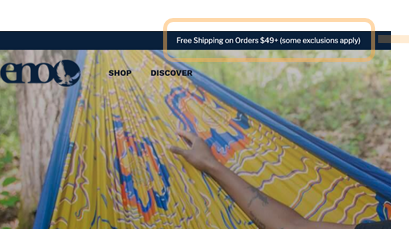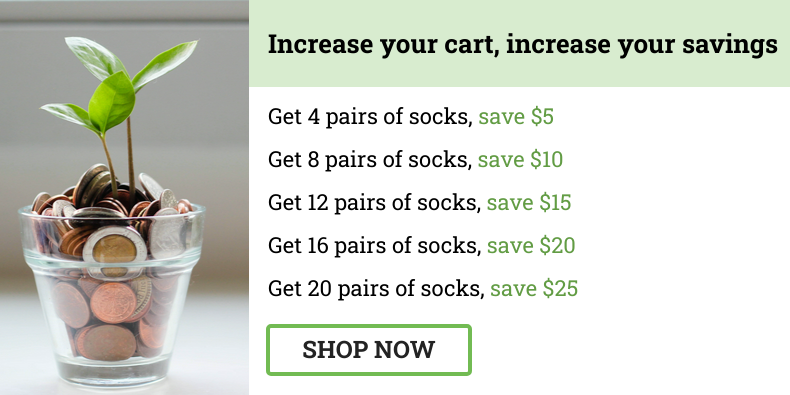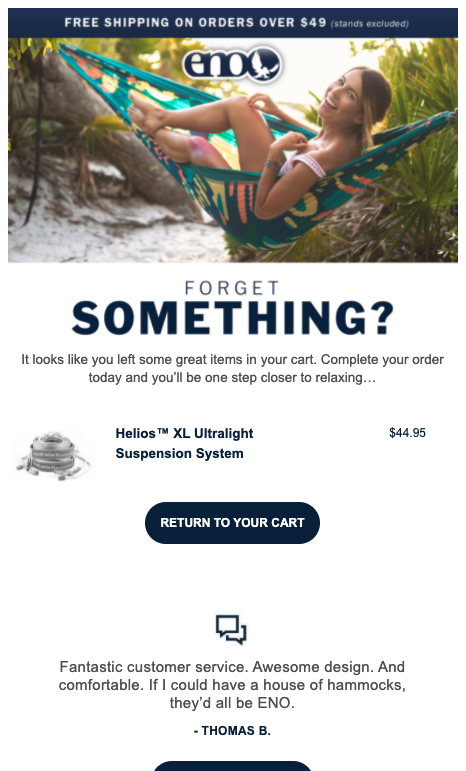Online shopping is supposed to make life easier, but all too often, virtual shopping carts are harder to navigate than an actual grocery cart. In order to prevent your customer’s online checkout experience from being the digital equivalent of a squeaky cart with one wheel that never stops spinning, we’ll review some strategies and best practices for growing your e-commerce average order value (AOV). Optimizing your e-commerce end-point is critical to prevent online shopping cart abandonment and get the most out of your marketing and traffic acquisition efforts. Shepherding customers to your website via ads and keywords is only half of the battle: Increasing their interaction value by optimizing your strategies on both mobile and desktop will lead to increased AOV.

AOV may be affected by multiple factors including price, product descriptions, number of reviews/ratings and, of course, diversity/versatility of product lines. Some of these points are easy to amend, while others take time. There are however other methods for improving the browsing to checkout experience that can elevate your overall Return on Investment (ROI). So without further ado, let’s take a look at how to increase average order value and fine-tune your online ecosystem to turn each customer’s experience, as well as their lifetime value, into a home run.
An easy approach is to add a “you may also like” CTA to the bottom of the cart. In some scenarios, this may not be a simple plug-and-play with the standard checkout interface, but there are ways to include this functionality on Shopify et al platforms through plug-ins and small-scale custom-coding.
Some Shopify app examples:
https://apps.shopify.com/zipify-oneclickupsell
https://apps.shopify.com/recommended-products-wiser
https://apps.shopify.com/frequently-bought-together
https://apps.shopify.com/also-bought
Set thresholds for free shipping
Incentivize your customers to see the value of increasing their cart size by offering free shipping scenarios. That is, offer free shipping if orders exceed a certain amount determined by your overall AOV and ROI. Most organizations will set these targets around $49 all the way up to $499 or higher. Another strategy to take here is to ensure that this free shipping messaging is prevalent throughout your brand, so insert it into your email campaign templates, onto your home page, social media, and at checkout.
Promote your other amazing products
This is a simple strategy that you have most likely implemented at some point or another on other mediums, but cross-selling is an extremely effective tool on product pages and within the cart. Show off what compliments the product that they are viewing or have placed into their cart by mentioning other items that enhance this product, whether these are upsells or accessories to augment their initial product. You can place galleries of pairable items and/or insert item pairings into the product description, but make sure to add links within the copy.
Examples of Shopify PDPs with additional suggestions:
https://www.american-giant.com/products/mens-premium-slub-henley-t-iron
https://missionworkshop.com/collections/shorts/products/the-stahl
https://www.rhone.com/products/spar-tactel-jogger
https://www.machinesforfreedom.com/products/key-short-5
Showcase the newer version
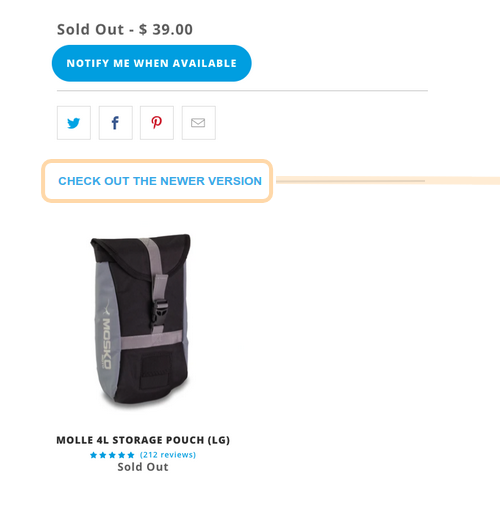
This is similar to an upsell, but with the main intent of broadening customer awareness. For instance on a product page of an older item, perhaps recommend, through copy or imagery, similar products that may be newer (and potentially more expensive).
Position your products into bundle deals
Pair up items together and offer deals for purchasing these items together, such as “Buy two tees and get a pair of pants at 15% off.” Take Soxy.com for instance where once their bundle deal was initiated they in turn witnessed an AOV increase of 358%[1]. Test out product bundles based on user purchase data or match with items of equal value, lifestyle use, or aesthetic similarities.
Incentivize quantity purchased
Another idea to test is to offer marginal or increasingly larger discounts depending on the quantity of a product that is being purchased. An example would be, “Receive 15% off when you purchase 10 or more pairs of socks.” In most cases, users will take note of the advantages to purchasing in bulk and thus will add more items to their cart. This may have a compounding benefit as customers will then search out other bulk deals and act on them.
Build a loyalty program (and gamify it)
There is not enough to be said about the power of loyalty. Offering a program to nurture online shopping and increased brand loyalty is a sure-fire way to build brand identity and AOV. Nearly 90% of companies have some sort of loyalty program these days according to Accenture research[2]. Loyalty programs keep your customers engaged and coming back for more. Gamify this process by offering creative ways to “level up” and diversify the rewards and you will have unlocked a gold mine. Also, be creative. Do not only provide percent off scenarios but try out “buy one, get one” or “freebie” or bonus item situations as well. An example of a gamified loyalty program would be to offer a collection whereby collecting each product unlocks a discount or an early access to an upcoming product. This same logic could be applied to a “wardrobe” whereby if the customer purchases each article of clothing (tee, pants, socks, cap etc, a jacket is unlocked to be 50% off exclusively for those who complete the “challenge.”
Augment your purchase experience with email campaigns
Your customers provide lots of data during their visit to your website, so use that data to create customized marketing campaigns via email. Try tailoring language and imagery to personalize the connection between the brand and the customer. Make them feel valued by offering suggestions based on what they like or have purchased in the past. Dynamic content within emails is an excellent way to build this bridge. Through proper tagging on a contact’s profile emails, including layout and verbiage, can be altered just for their inboxes.
Employing abandoned cart and collections/product abandonment emails that are based on your site’s user behavior is often the lowest-hanging opportunity when it comes to reducing cart abandonment. If a user leaves your site with an open cart they will receive an email displaying their cart so that they can easily be reminded and take action to fulfill that cart transaction. This is a great way to avoid permanent online shopping cart abandonment. According to Campaign Monitor, the conversion rate for cart abandonment emails is more than 10% [3] which equates to higher open and click-through rates compared to traditional marketing messages. Collections/product abandonment emails utilize the same strategy but are sent to customers who landed on a collections page or a product page and never made a purchase. In this situation, customers are sent an email that displays the product collection or product(s) that they were viewing and encourages them to return to make a purchase.
Increase the fear of missing out
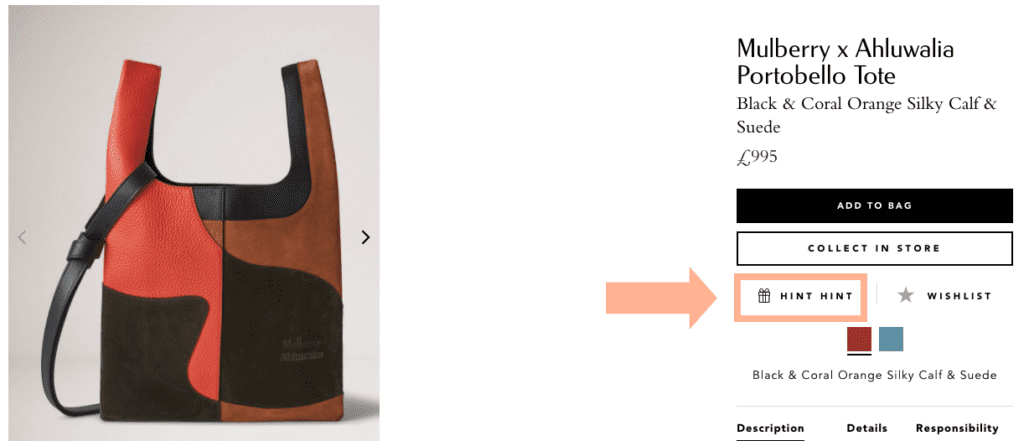
People, now more than ever, have a fear of missing out on things, affectionately called FOMO (Fear Of Missing Out). This phenomenon is rarely more true than when it comes to saving money. Use FOMO to your advantage by offering promo codes that expire within a specific window of time. Up the ante and have these codes only apply to certain items in your inventory to raise awareness or curtail excess inventory. The icing on the cake is to provide a sense of intrigue such as the strategy employed by Mulberry with the Hint Hint CTA which leads to a social sharing feature that results in subsequent rewards for sharing.
Boost credibility via your brand community
Reviews and comments can make or break your product’s viability. Some studies, such as a recent HubSpot survey, show around 81% of consumers trust the advice of family and friends over businesses[4]. Therefore foster a loyal community through interactivity, quality products, effective communications, accommodating return policies, ecommerce order fulfillment, and evolving benefits. When you play this card correctly, you can expect to receive good reviews and praising comments, these will in turn help encourage potential customers to invest themselves within your brand as well. If you have loyal customers, but they are lax on providing brand support, it never hurts to ask for reviews to help bolster your products. So shoot them an email or connect via social. KPMG found that 31% of online consumers have posted product feedback online[5]. For products yet to get a review, omit the review/comment feature if possible until you can seed it with content from social media or other mediums.
If you’d like to learn more about any of the above strategies to increase your online AOV, or if this all seems totally overwhelming, drop us a line and we’d be happy to guide you through some potential avenues for growing your ecommerce business.
Foghorn Labs has been helping Outdoor and Active Lifestyle brands accelerate DTC e-Commerce revenue since 2010. Our team of friendly, insightful subject matter experts can support your brand across a range of digital marketing fields, including SEO, PPC, Paid Social, Email Marketing, and Site Analytics.
Attributions:
[1] Shopify
[2] Accenture
[3] Campaign Monitor
[4] HubSpot
[5] KPMG


